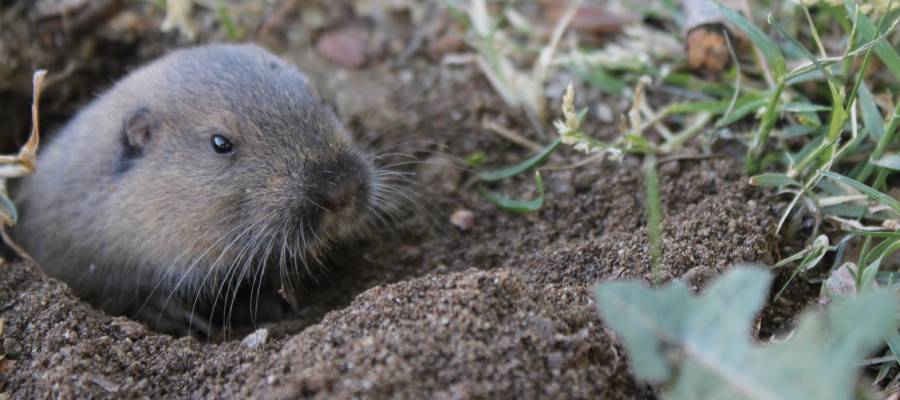Sometimes it’s difficult to tell when moles are infesting your yard until you roll your ankle in a mole hole in your lawn. How did they get there, and how long have they been there? Moles are one of the sneakiest and most destructive mammals living in Des Moines IA, and every year we work hard to rid our customers’ lawns of them. If you’re struggling to track down moles in your yard, read on for advice from our technicians at Springer Professional Home Services. In our three decades of service, we’ve solved the mystery of moles and use what we’ve learned to help our neighbors every day.
Identifying Moles in Des Moines IA
Moles can be hard to spot, but if you do see animals digging through your yard, it’s very helpful to be able to identify them as moles, gophers, or otherwise, so your mole removal technician knows what to expect when they arrive. Here are some distinguishing features of moles:
- Moles are smaller than many expect them to be—usually between 4 and 7 inches long
- They have brown fur and large, pink hands with pronounced fingers
- Moles have tiny eyes and narrow faces
- They can often be found in groups—where there’s one, there are sure to be many
Have a pest problem? We can help!
4 Signs of Moles in Your Lawn or Garden
If you’re wondering if you’ve found mole damage in your yard, here are some signs to look for to identify the damage as caused by moles and not other animals living in Des Moines IA:
- You will notice multiple mounds of dirt pop up in your yard overnight.
- Mole tunnels cause damage to plants that is visible on the surface because they tear through roots. Unusual poor plant growth is a sign of moles.
- Moles cause small stones to rise to the surface of your lawn through their tunneling. These can damage your lawnmower if you don’t find them.
- If you’ve noticed wide-open tunnels at the surface, you might not have moles. The larger the tunnel, the more likely it is to be hosting gophers.
Mole Control in with Springer Professional Home Services
Moles have to be dealt with right away so they don’t ruin your whole lawn or garden. Whether you are sure that you’ve found moles in your yard or you can’t tell what’s tearing apart your lawn, call your local pest control company for an inspection. The mole control experts at Springer Professional Home Services are equipped with the strategies and technology to get rid of moles, even when they’ve established a serious presence in your yard. For a free quote or to learn more about how we operate, contact us today!


